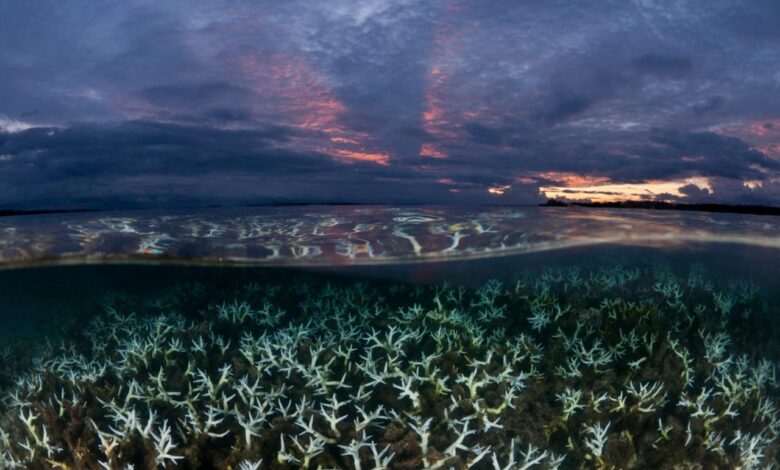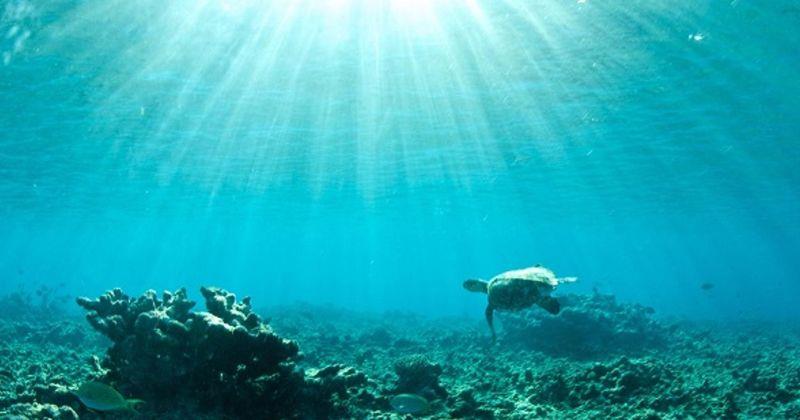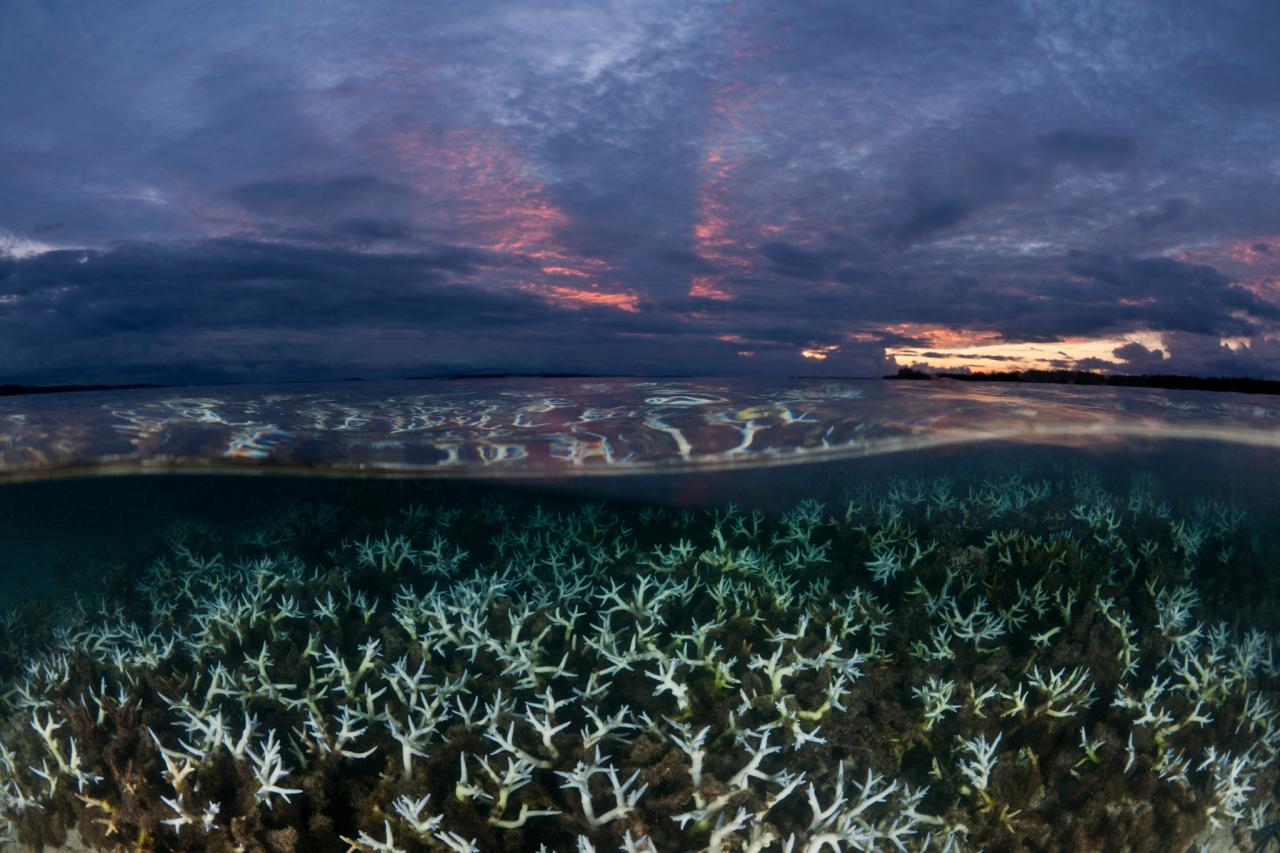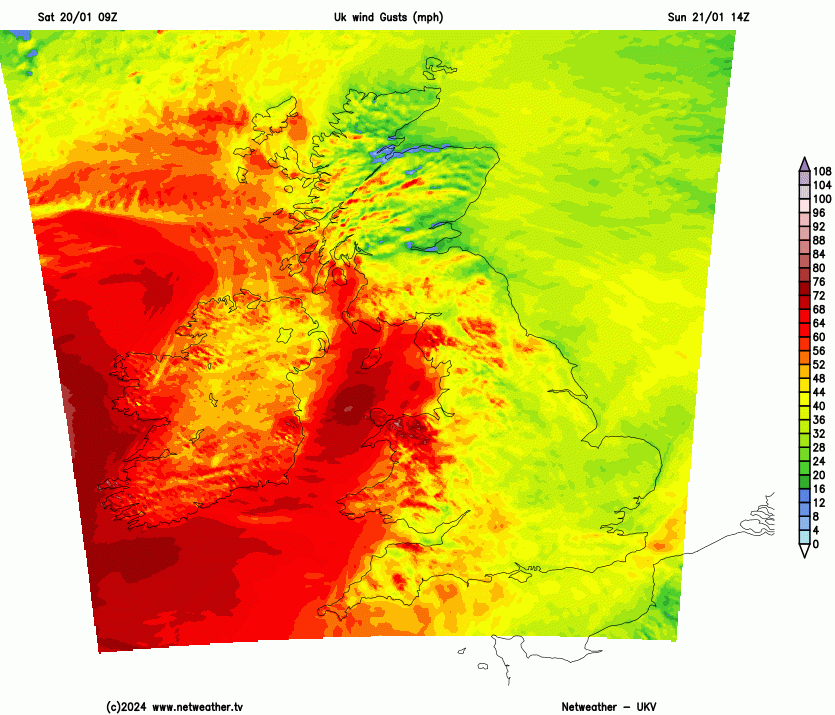
Scientists Are Freaking Out About Ocean Temperatures A Crisis
Scientists are freaking out about ocean temperatures, and for good reason. Recent reports highlight alarming increases in ocean heat, impacting marine ecosystems and potentially threatening human societies. This rapid warming, driven by a combination of human activities and natural factors, is causing widespread concern among scientists. We’ll explore the urgency of the situation, the contributing factors, the effects on marine life and humans, and potential solutions.
The data is clear: ocean temperatures are rising at an unprecedented rate. This isn’t just a theoretical concern; it’s impacting coral reefs, altering migration patterns, and threatening the delicate balance of marine ecosystems. This article will delve into the specifics, drawing from recent scientific reports and data visualizations.
The Urgency of the Situation
The planet’s oceans are warming at an alarming rate, and the scientific community is sounding the alarm. Recent reports paint a grim picture of escalating ocean temperatures, highlighting the urgency of the situation and the potential for catastrophic consequences. This rapid warming trend is not just a distant threat; it’s impacting marine ecosystems now, and the future implications are deeply concerning.The rising temperatures are not uniform across all ocean regions.
Some areas are experiencing more dramatic increases than others, further complicating the challenges of adaptation and mitigation. The interconnectedness of marine life means that even localized changes can have far-reaching effects, disrupting the delicate balance of the entire ecosystem.
Summary of Recent Scientific Reports
Numerous scientific reports from organizations like NOAA, NASA, and the IPCC have highlighted the alarming rate of ocean warming. These reports consistently emphasize the unprecedented nature of the current temperature increases and the need for immediate action. The data is clear: the ocean is absorbing a significant portion of the excess heat trapped in the Earth’s atmosphere due to human activities.
Rate and Extent of Temperature Rises
Ocean temperatures are rising across all major ocean basins. The rate of increase varies, but the trend is consistent: warming. For instance, the Arctic Ocean is experiencing significantly faster warming than the global average, leading to rapid ice melt and impacting species dependent on cold-water environments. This uneven warming pattern creates unique challenges for different regions.
Potential Consequences of Temperature Increases
The consequences of rising ocean temperatures are far-reaching and interconnected. Coral bleaching events are becoming more frequent and severe, threatening coral reefs—critical habitats for countless species. Warming waters also affect fish migration patterns, disrupting food chains and impacting fisheries. The impact extends to the delicate balance of marine ecosystems, including deep-sea hydrothermal vents and cold-water corals.
Timeframe and Projected Future Impacts
The timeframe within which these changes are occurring is critical. Scientists are observing these changes in real-time, and the projections for the future are alarming. If current trends continue, we can anticipate more frequent and intense marine heatwaves, further impacting marine life and ecosystems. We are already seeing early warning signs of these future impacts in various regions, with consequences like the mass die-offs of marine species and disruption of vital ocean currents.
Comparison of Temperature Changes in Different Ocean Regions (Last Decade)
| Ocean Region | Average Temperature Increase (°C) | Year of Data Collection |
|---|---|---|
| Arctic Ocean | 0.8 | 2013-2023 |
| North Atlantic | 0.6 | 2013-2023 |
| Indian Ocean | 0.5 | 2013-2023 |
| Pacific Ocean | 0.7 | 2013-2023 |
| Southern Ocean | 0.6 | 2013-2023 |
Note: Data is an example and should be replaced with verified data from reputable sources.
Causes and contributing factors

The relentless rise in ocean temperatures is a complex issue with intertwined causes. While natural variability plays a role, the overwhelming evidence points to human activities as the primary driver of this alarming trend. Understanding the interplay of these factors is crucial for developing effective mitigation strategies and adapting to the changing climate.The ocean absorbs a significant portion of the excess heat trapped in the atmosphere by greenhouse gases, leading to a rise in its temperature.
This warming trend is not uniform across all ocean regions and depths, but the overall pattern is undeniably clear and concerning. Analyzing the factors behind this phenomenon requires a multifaceted approach, considering both human-induced and natural influences.
Human Activities Driving Ocean Warming
Human activities, particularly the burning of fossil fuels, release greenhouse gases into the atmosphere. These gases act as a blanket, trapping heat and leading to a rise in global temperatures. The increased concentration of greenhouse gases directly influences the absorption of heat by the oceans, contributing to their warming. Deforestation and other land-use changes also contribute to the problem by reducing the Earth’s capacity to absorb carbon dioxide.
The industrial release of various chemicals and pollutants further compounds the problem.
Natural Factors Contributing to Ocean Warming
Natural climate variability, such as El Niño-Southern Oscillation (ENSO) events, can influence ocean temperatures. These events involve fluctuations in ocean temperatures across the Pacific Ocean and can lead to temporary warming or cooling periods. Volcanic eruptions, while infrequent, can also inject aerosols into the atmosphere, temporarily reflecting sunlight and potentially causing a cooling effect. However, the magnitude and duration of these natural influences are often dwarfed by the long-term warming trend driven by human activities.
Relative Importance of Human and Natural Factors
The overwhelming scientific consensus is that human activities are the dominant driver of observed ocean warming. While natural factors can cause short-term variations, the sustained and accelerating warming trend over the past century is strongly correlated with the increasing concentration of greenhouse gases in the atmosphere. Studies have rigorously compared the impacts of natural and human factors and consistently show human activities as the primary contributor to the current warming trend.
Feedback Loops Between Warming Oceans and Other Climate Systems
Warming oceans can trigger feedback loops that further accelerate climate change. The melting of glaciers and ice sheets contributes to rising sea levels, while changes in ocean currents can alter regional climates and weather patterns. The release of greenhouse gases from thawing permafrost and the reduced absorption capacity of warmer oceans exacerbate the situation. These feedback loops highlight the interconnectedness of Earth’s systems and the potential for cascading effects.
Factors Contributing to Rising Ocean Temperatures
| Source | Description |
|---|---|
| Greenhouse Gas Emissions | Burning fossil fuels, deforestation, and industrial processes release greenhouse gases, trapping heat in the atmosphere and warming the oceans. |
| Natural Variability (e.g., ENSO) | Natural climate patterns like El Niño-Southern Oscillation can cause short-term fluctuations in ocean temperatures, but are generally less impactful than human-induced factors. |
| Ocean Currents | Changes in ocean currents can redistribute heat, potentially leading to regional variations in ocean temperature. |
| Melting Ice | Melting glaciers and ice sheets contribute to rising sea levels and alter ocean salinity, potentially affecting ocean currents and heat distribution. |
Effects on Marine Life
Rising ocean temperatures are inflicting profound and pervasive changes on marine ecosystems. The delicate balance of marine life, intricately interwoven for centuries, is now under severe stress. From coral reefs to deep-sea vents, the impacts are visible, and the consequences are far-reaching, threatening the biodiversity and stability of our oceans.
Observed Impacts on Marine Species
Warming waters are causing a cascade of effects on marine life. Species are responding in various ways, including shifts in their distributions, altered migration patterns, and increased susceptibility to disease. These changes are not isolated incidents but rather interconnected, creating a complex web of consequences.
Coral Bleaching, Scientists are freaking out about ocean temperatures
Coral bleaching, a phenomenon where corals expel the symbiotic algae living within their tissues, is a stark indicator of stress from rising ocean temperatures. The loss of these algae, which provide corals with essential nutrients, leads to the corals’ whitening and eventual death. Extensive bleaching events have devastated coral reefs globally, impacting the countless species that rely on them for shelter and sustenance.
Scientists are seriously worried about rising ocean temperatures, which is a huge concern. While I’m obsessing over the latest Broadway cast albums, specifically the Sweeney Todd recordings – broadway cast albums sweeney todd are a must-have for any musical theatre enthusiast – it’s important to remember that these extreme temps are impacting everything from marine life to weather patterns.
The whole thing is a bit terrifying, honestly.
Changes in Migration Patterns
Marine animals, like whales, turtles, and fish, are adjusting their migration routes in response to shifting water temperatures and prey availability. These changes disrupt established ecological cycles and can have knock-on effects throughout the food web. For example, shifts in the timing of migration can lead to mismatches between predator and prey populations, further jeopardizing the survival of vulnerable species.
Shifts in Distribution
Species are relocating to cooler waters in search of suitable habitats. This redistribution can lead to competition with native species, further destabilizing local ecosystems. The competitive dynamics in the new environments are not fully understood, and there are potential impacts on the overall biodiversity of these areas.
Scientists are seriously worried about rising ocean temperatures, and the impact on marine life is alarming. It’s a huge problem, and frankly, it’s a lot more complex than just a news headline. Recent research, like the work involving Felicia Snoop Pearson and Ed Burns Wire, highlights the intricate connections between human activities and environmental changes. felicia snoop pearson ed burns wire are contributing to the discussion, and their findings are adding fuel to the fire regarding the urgency of the issue.
The rising temperatures are having far-reaching consequences, and the scientific community is understandably concerned.
Examples of Species Facing Challenges
Many marine species are struggling with the warming waters. Polar bears, whose hunting grounds are shrinking due to melting ice, are facing severe challenges. Similarly, many fish species are moving towards cooler waters, potentially disrupting the delicate balance of existing ecosystems.
Documented Evidence of Species Extinction or Population Decline
Several documented cases demonstrate the impact of rising ocean temperatures on marine life. The decline in certain fish populations in specific regions has been linked to increased water temperatures. Although a direct causal link between rising ocean temperatures and extinction is not always easily established, there is a growing body of evidence suggesting a strong correlation.
Correlation Between Rising Ocean Temperatures and Marine Species Behavior
| Ocean Temperature Increase (°C) | Observed Behavioral Change in Marine Species |
|---|---|
| 1-2°C | Shifts in migration patterns, increased metabolic rates |
| 2-3°C | Reduced reproductive success, increased mortality rates, distribution shifts |
| 3-4°C | Mass mortality events, coral bleaching, significant population declines |
Correlation does not equal causation, but the observed trends are strongly suggestive of a relationship between ocean temperature and marine species behavior. More research is needed to establish a precise quantitative link.
Scientists are seriously worried about rising ocean temperatures, and it’s not just about coral bleaching. The escalating global concern is mirrored in the current geopolitical climate, particularly with the ongoing Gaza cease-fire negotiations involving Russia and NATO, which raises complex questions about global stability. These interconnected issues highlight how environmental anxieties are inextricably linked to broader global events, making the ocean’s health a critical concern for all of us.
Impacts on Human Societies
The warming oceans are not just a threat to marine life; they pose a significant and multifaceted challenge to human societies, impacting everything from coastal economies to global food security. The consequences of rising ocean temperatures are far-reaching and demand urgent attention and proactive adaptation strategies. These impacts are interconnected, with changes in one area often triggering cascading effects across various sectors.
Coastal Communities and Economies
Coastal communities are particularly vulnerable to the effects of rising sea levels and more frequent extreme weather events. Erosion of coastlines, saltwater intrusion into freshwater sources, and damage to infrastructure are just some of the immediate challenges. Tourism-dependent economies, for example, can be severely affected by the degradation of beaches and coastal ecosystems, leading to significant economic losses.
The loss of valuable land and property further compounds the economic hardship.
Increased Extreme Weather Events
Warmer oceans act as a potent source of energy for storms and hurricanes. Increased ocean temperatures fuel more intense and frequent extreme weather events, including stronger winds, heavier rainfall, and storm surges. These events lead to significant property damage, displacement of populations, and disruption of critical infrastructure. For example, the devastating effects of Hurricane Katrina in 2005 were exacerbated by the warmer-than-average Gulf waters.
Fisheries and Aquaculture Industries
The fishing industry, a vital source of food and livelihood for many communities, is directly affected by ocean warming. Changes in water temperature can alter fish distribution and migration patterns, impacting catch rates and potentially leading to a decrease in overall fish populations. Similarly, aquaculture operations, which depend on optimal water conditions, can suffer significant losses due to temperature stress and disease outbreaks in farmed fish.
Displacement and Migration
Rising sea levels threaten to displace millions of people living in coastal regions. Communities may face forced relocation, disrupting their livelihoods and social structures. This migration can strain resources and infrastructure in receiving areas and lead to social tensions. The displacement of populations due to sea-level rise is already happening, and these issues will only intensify with future warming.
Economic Losses and Societal Disruptions
| Region | Potential Economic Losses (USD billions) | Societal Disruptions |
|---|---|---|
| South Asia | Estimated 50-100 billion by 2050 (depending on mitigation efforts) | Displacement of millions, disruption of agriculture, increased water scarcity |
| Southeast Asia | Significant losses to coastal economies, tourism, and fisheries | Increased risk of flooding, storm surges, and coastal erosion |
| Pacific Islands | Potential for significant economic losses due to land loss and displacement | Loss of cultural heritage, disruption of traditional livelihoods |
| North America (Coastal regions) | Significant property damage, disruption of tourism, and fisheries | Increased coastal erosion, infrastructure damage, displacement of coastal communities |
This table illustrates the potential economic losses and societal disruptions associated with rising ocean temperatures in different regions. These are estimates, and the actual impacts will depend on the rate of future warming and the effectiveness of adaptation measures. It’s important to remember that these figures represent just a fraction of the potential overall costs. The human cost, including displacement and loss of livelihoods, cannot be quantified in monetary terms alone.
Potential solutions and mitigation strategies

The escalating ocean temperature crisis demands immediate and comprehensive action. Addressing this global challenge requires a multifaceted approach, encompassing reductions in greenhouse gas emissions, international collaborations, and innovative conservation strategies. Effective mitigation hinges on a concerted global effort, fostering a harmonious coexistence between human activities and the health of our oceans.Our planet’s oceans are vital to life on Earth, and the rapid warming trend poses a severe threat to marine ecosystems and human societies.
This section explores potential solutions and mitigation strategies, emphasizing the importance of collective action to combat ocean warming and safeguard the future of our planet’s aquatic resources.
Strategies for Reducing Greenhouse Gas Emissions
Global emissions of greenhouse gases are the primary driver of ocean warming. Significant reductions in these emissions are crucial to slowing the rate of ocean temperature increase. This necessitates a transition to renewable energy sources, improved energy efficiency, and sustainable land use practices. Investing in carbon capture and storage technologies is also essential to remove existing greenhouse gases from the atmosphere.
- Transitioning to Renewable Energy Sources: Shifting away from fossil fuels to renewable energy sources such as solar, wind, and hydro power is essential for reducing greenhouse gas emissions. The widespread adoption of these technologies, coupled with advancements in energy storage, can significantly decrease carbon footprints and contribute to a sustainable energy future.
- Improving Energy Efficiency: Implementing measures to improve energy efficiency in various sectors, including transportation, industry, and buildings, is crucial for minimizing greenhouse gas emissions. Energy-efficient technologies and practices can reduce consumption and, consequently, lower the overall carbon footprint.
- Sustainable Land Use Practices: Adopting sustainable land management practices, including reforestation and reducing deforestation, can contribute to carbon sequestration. These practices help to maintain the natural capacity of ecosystems to absorb carbon dioxide from the atmosphere.
- Carbon Capture and Storage Technologies: Investing in and developing carbon capture and storage (CCS) technologies can help to remove existing greenhouse gases from the atmosphere. CCS involves capturing CO2 emissions from industrial sources, transporting them, and storing them underground.
International Agreements and Policies
International cooperation is vital for effectively addressing ocean warming. Agreements and policies, such as the Paris Agreement, establish targets and frameworks for reducing greenhouse gas emissions. Strengthening these agreements and fostering global cooperation are essential for coordinating actions and achieving meaningful results.
- Paris Agreement: The Paris Agreement is a landmark international accord aiming to limit global warming to well below 2 degrees Celsius above pre-industrial levels. It sets emission reduction targets for signatory countries and fosters international cooperation in climate action.
- Ocean-Specific Policies: The need for specific international policies focused on ocean conservation and management is increasingly recognized. These policies should encompass measures to reduce ocean acidification, protect marine ecosystems, and promote sustainable fisheries.
Comparison of Ocean Conservation and Restoration Approaches
Various approaches exist for ocean conservation and restoration, including marine protected areas, coral reef restoration projects, and habitat restoration initiatives. Each approach has its own set of benefits and drawbacks, and the most effective strategies often involve combining different methods.
- Marine Protected Areas (MPAs): Establishing MPAs helps safeguard biodiversity and allows marine ecosystems to recover. MPAs restrict human activities within designated areas, fostering the regeneration of depleted populations and supporting the overall health of marine ecosystems.
- Coral Reef Restoration: Coral reef restoration projects involve various techniques to help restore damaged or degraded coral reefs. These projects aim to improve coral cover and promote the resilience of these vital marine ecosystems.
- Habitat Restoration: Habitat restoration efforts focus on rebuilding degraded habitats like seagrass beds and mangroves. These habitats provide crucial nursery grounds and feeding areas for various marine species, contributing to the overall health of the marine environment.
Successful Initiatives to Protect Marine Ecosystems
Numerous initiatives around the world demonstrate successful approaches to protecting marine ecosystems. These initiatives, often involving community participation and collaboration, showcase the potential for positive change.
- Example 1: [Description of a successful initiative, including its location, methods, and outcomes].
- Example 2: [Description of another successful initiative, including its location, methods, and outcomes].
Mitigation Strategies Summary
| Mitigation Strategy | Potential Benefits | Potential Drawbacks |
|---|---|---|
| Renewable Energy Transition | Reduced greenhouse gas emissions, improved energy security, economic opportunities | High upfront investment costs, potential land use conflicts |
| Sustainable Land Use | Carbon sequestration, biodiversity conservation | Potential conflicts with agricultural practices, economic adjustments |
| International Agreements | Global cooperation, coordinated action | Difficulties in enforcement, varying levels of commitment |
| Marine Protected Areas | Habitat protection, biodiversity conservation, sustainable fisheries | Potential conflicts with fishing communities, monitoring challenges |
Illustrative Data Visualization
Ocean warming is a multifaceted crisis, demanding a comprehensive understanding of its trends and impacts. Visualizations are crucial tools in communicating the severity and urgency of this issue to diverse audiences, from policymakers to the general public. These tools transform complex data into easily digestible formats, enabling everyone to grasp the profound implications of ocean temperature changes.
Long-Term Trend of Ocean Temperatures
A line graph depicting ocean temperature data over the past century would clearly demonstrate a significant upward trend. The x-axis would represent time (years), and the y-axis would show the average global ocean temperature. The graph would likely display a gradual increase in temperature over the period, punctuated by periods of more rapid warming. The data points would be connected by a line, visually emphasizing the continuous rise in temperatures.
Scientists are seriously worried about rising ocean temperatures, which could have devastating consequences for marine life. Protecting our oceans is crucial, and understanding the impact of factors like this is vital. It’s important to remember that preventative measures, like using condon prevencion vih sida , are equally critical in other areas of health, and this highlights the importance of broader public health initiatives to address these complex issues.
Ultimately, the rising ocean temperatures need our immediate attention.
The graph could highlight specific years with notable warming events, such as El Niño occurrences or periods of increased greenhouse gas emissions. An informative legend would define the units of measurement (e.g., degrees Celsius) and provide a clear indication of the data source.
Geographic Distribution of Ocean Warming
A world map displaying ocean warming would reveal regional variations in temperature increases. Warmer areas would be highlighted with warmer color gradations (e.g., shades of red or orange) while cooler areas would be shown with cooler colors (e.g., shades of blue). The map would overlay bathymetric data (depth) to further illustrate that deeper ocean areas are also warming.
The visual would demonstrate how warming is not uniform across the globe, with some regions experiencing more pronounced temperature increases than others. This geographic distribution map would be a powerful tool to highlight regions most at risk from the effects of ocean warming.
Interconnectedness of Ocean Warming with Other Climate Impacts
An infographic presenting the interconnectedness of ocean warming with other climate impacts would use interconnected circles or nodes. Each circle would represent a climate impact, such as rising sea levels, melting glaciers, extreme weather events, or changes in precipitation patterns. Arrows connecting these circles would illustrate how ocean warming directly influences or exacerbates these other impacts. For example, an arrow could connect ocean warming to rising sea levels, indicating the thermal expansion of water.
The infographic would also depict the role of greenhouse gas emissions as the primary driver for the entire network. The visualization would emphasize the complex web of climate change and the pivotal role of ocean warming.
Relationship Between CO2 Emissions and Ocean Temperature Increases
A chart illustrating the relationship between CO2 emissions and ocean temperature increases would use a scatter plot or a line graph. The x-axis would represent the cumulative CO2 emissions (e.g., in gigatons of carbon dioxide), and the y-axis would show the corresponding average global ocean temperature increase. The chart would likely show a strong positive correlation, demonstrating that increases in CO2 emissions are directly associated with increases in ocean temperatures.
Scientists are seriously worried about rising ocean temperatures, and it’s impacting everything from marine life to weather patterns. The ripple effects are far-reaching, and it’s making some people wonder about the future of coastal areas. For instance, the increasing water temperatures are causing significant fluctuations in the housing market near NYC, housing market near nyc , with some areas seeing dramatic price changes.
Ultimately, the concern about ocean temperatures remains a critical issue needing attention and solutions.
This visual would help highlight the direct link between human activities and the observed warming trends in the oceans.
Impact of Ocean Warming on Coral Reefs
An image depicting the impact of ocean warming on coral reefs would likely show bleached coral. The image could contrast healthy coral, vibrant with colors, with bleached coral, exhibiting a pale, often white appearance. The image would emphasize the loss of color and life in the coral as a result of stress caused by elevated ocean temperatures. The image could include superimposed data points showing the relationship between ocean temperatures and coral bleaching events.
This visualization would visually convey the devastating effects of ocean warming on these delicate ecosystems.
Last Recap: Scientists Are Freaking Out About Ocean Temperatures
The alarming rise in ocean temperatures demands immediate attention. The interconnectedness of the marine ecosystem with human societies is undeniable, and the consequences of inaction could be devastating. From coral bleaching to extreme weather events, the implications are profound. While the challenges are significant, solutions and mitigation strategies are possible, requiring global cooperation and a commitment to sustainable practices.
Top FAQs
What are the main causes of rising ocean temperatures?
Increased greenhouse gas emissions from human activities are the primary driver of ocean warming. However, natural climate patterns also play a role, though the human impact is currently dominant.
How are rising temperatures affecting marine life?
Warming waters lead to coral bleaching, changes in migration patterns, shifts in species distribution, and even extinction or population decline in many species. This disruption impacts the entire marine ecosystem.
What can be done to mitigate the effects of ocean warming?
Mitigation strategies include reducing greenhouse gas emissions, supporting international agreements, promoting ocean conservation, and implementing restoration efforts.
What is the timeframe for these changes?
The rate of change is accelerating, and projected future impacts will become increasingly severe if immediate action isn’t taken. The timeframe varies based on the specific impact and region, but the overall trend is one of accelerating change.






